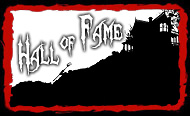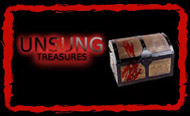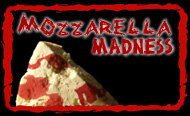I would say they’re lucky the family happened to settle on an easily identifiable—if not iconic—style of house, but it’s not like many of these films actually took place on 112 Ocean Avenue anyway. Hell, many of them didn’t even take place in Amityville, but that hasn’t stopped 14 films (and counting!) from bearing the name in their titles. This is less a franchise and more a cinematic yard sale, one where various items are readily available for bald-faced exploitation in a desperate attempt to latch onto a brand name. Over the course of 35 years, it’s been passed down all the way from Samuel Arkoff to Jason Blum in an attempt to capture the hysteria of an original phenomenon that has since been debunked. Somehow, it endures, perhaps because we still want to believe. How else do you explain how they made an entire movie centered on a damn lamp from the Amityville house?
Note: My Amityville Horror is one of the better films with the Amityville branding, but it's not included here since it feels disingenuous to include a documentary about Danny Lutz's actual trauma alongside a bunch of films that exploited it.
14. Amityville Vanishing Point (2016)

Deferring to the IMDb synopsis only helps so much: sure, it involves a group of friends at an Amityville boarding house (the only reference to Amityville by the way, and it’s scrawled on what looks to be a cardboard sign) grieving for a friend that dies “under mysterious circumstances” (though a prologue seems to pretty much confirm that she’s murdered) and their attempt to uncover the truth. However, this comprises maybe 15% of the movie at best, as they take time out from being concerned about their friend’s death to stage gratuitous make-out sessions and put on awkward strip-teases. The rest of the film involves complete, incomprehensible nonsense revolving around a loudmouthed FBI agent’s obsession with baseball cards and drugs (and judging from the final product here, I’m concerned there were actual drugs involved with the production of Amityville Vanishing Point). At one point, he brandishes an absurd prosthetic penis that shoots a ridiculous money shot that’s captured in slow motion and replayed three times. Your guess is as good as mine.
If that weren’t bad enough, the film is incompetently produced with what has to be consumer-grade equipment and a minimal concern for quality. I say “minimal” because someone obviously took the time to (barely) edit it and overlay a few instances of obvious ADR; otherwise, the image is a jagged, digital mess with no regard paid to lighting or framing, and the sound mix is an inconsistent wreck of muffled dialogue and overbearing, saccharine music. Most of the dialogue feels like someone is daring the cast to read the most inane lines (at one point, one of them reads them straight off of a phone). In fact, that summarizes Amityville Vanishing Point altogether: it has to be the result of a dare or a lost bet of some sort. When I say it feels like a bunch of friends got together to play dress-up and film it, I’m not exaggerating: this is real DIY filmmaking, only done without any of the charm (or even skill) of previous backyard productions that made this sort of thing viable. I never thought anything other than the next entry on this list would land at the absolute bottom of the barrel, yet here we are.

Even the dull hauntings can’t escape the void of charisma that is this bunch, which experiences a laughable set of low-budget parlor tricks (the spirit looks like a blob smeared on the camera lens). Per my original review, the only saving grace is that it actually involves the Amityville house, even if it has been stripped of its iconic façade. Four years after its release, it still doesn’t feature a credited writer, nor does it boast an officially credited director. Consider that for a second: even the dudes who decided it’d be a good idea to make a movie based off of a haunted lamp weren’t that embarrassed. The only saving grace here? It clocks in under 90 minutes, which serves as something of a tie-breaker between it and the longer Vanishing Point (it should be noted that this method has been frequently employed with this list).

Twenty-five years after The Amityville Curse, Canada decided to give it another go in this franchise—call this one The Amityville Mulligan, I guess, though that might imply that this one is an improvement. It is not. Even its placement near the bottom of this list may not be enough to convey just how dreadful it is to sit through. Officially, its running time is listed at 102 minutes, but translating that out to Amityville time makes it feel more like 302.
As the title suggests, it’s mostly set inside of an abandoned theater in Amityville, which continues this recent trend of movies reimagining the entire Long Island town as a portal to hell thanks to its vague (and fabricated) history involving witchcraft. For whatever reason, this recent rash is preoccupied with the same general premise involving the annual, ritual sacrifice of six souls to satisfy the town’s unvanquished spirits. If nothing else, The Amityville Theater eventually plunges headlong into this, so much so that the story comes to (very vaguely) resemble an occult British folk thriller, what with its out-of-nowhere town conspiracies and ridiculous twists and turns (the most ludicrous: an oversized “key to the city” that literally unlocks every key in town).
I wish this one lived up to how ludicrous that must sound, but this small burst of absurdity towards the end can’t make up for the fact that you’ve spent the previous 90 minutes with an awful set of lame college kids. One of them has inherited the old theater, so she and her friends have naturally decided to scope it out before they’re promptly (and mysteriously) locked up in the place. Not that any of them seem to be all that concerned since they hang out and needle each other like a buttheads, anyway. Of course, most of them can’t even say their names convincingly, so actually acting afraid might be a bit beyond their grasp. Of course, none of this would really be too much of a problem if the film were committed to offing them in horrific fashion, but it can’t even be bothered to do that.

Credit is due for its attempt to at least tie into the Amityville mythology, as the titular asylum has been built on the infamous plot of land at 112 Ocean Avenue (it turns out it must have been a fucking huge lot, I guess). And where most of the “sequels” would be content to stop there, this one at least digs into the DeFeo murders (going so far as to restage them for the umpteenth time during the opening credits) and the Native American stuff from Jay Anson’s novel (though it jumbles it up into some other nonsense). I appreciate the basic effort to, you know, try and be an Amityville movie, whatever that even means at this point.
Unfortunately, the good intentions can’t conceal the feeling that this thing is cliché as hell. A young woman reeling from the death of her mother takes a job as a janitor at this asylum, only to discover that the place is seedy as hell. Not only does it house a notorious collection of the criminally insane, but most of its staff is a bunch of unseemly creeps, too. Watching her navigate this mostly amounts to a snoozy drama where the most interesting conflict is the largely British cast vs. their American accents. By the time the film comes alive for its climax, it’s too late to matter, though I’ll admit the ending has a really sinister mean streak to it. Also, this certainly isn’t the worst thing to pair the words “Amityville” and “asylum,” so it has that going for it.

In this story, the sacrifice of six victims is demanded by a warlock (Roberts) seeking to resurrect a slain witch, a ritual that just happens to coincide with a group of friends visiting a family member in Amityville. Since, again, the entire town is resting on Satan’s den, they’re not visiting the house (though it does feature those iconic windows), but it’s close enough to land them in an extremely low-rent Evil Dead knockoff. Even though this isn’t the worst idea, its crummy execution all but sinks it because so little of it is convincing, from the performances to the effects. Shit, there are some CGI snowflakes that will leave you wondering why anyone spared any part of the budget for something so inconsequential and bad.
Obviously, the biggest disappointment is to see Ray and Polonia’s continued association with this kind of lazy, half-assed junk. While I wouldn’t argue that their early films are anything approaching masterpieces, they at least aspired to be genuine splatter-fests and outrageous effects displays. Stuff like Amityville Death House feels rife with digital fakery and shortcuts that undercut whatever practical effects that do manage to slip through.
What’s more, this might be the most exploitative use of Eric Roberts. Not that it’d be possible to know for sure since he’s appeared in more than 300 projects this decade alone, but this one has to at least land near the top of the list. “Appearing” only as the masked warlock (and glorified) narrator, he never interacts with the rest of the cast—though he does get to read from a Necronomicon prop that is very obviously one of those famous “Book of the Dead” DVD editions of The Evil Dead.
In short, what in the hell, Amityville Death House? Just when you think this franchise can’t find new ways to astound and confound, it does something like this. And when you’ve sullied the good name of Fred Olen Ray, Eric Roberts, and the Polonia brothers, you’ve gone too damn far, Amityville.

Instead, Curse takes its setting as something of a suggestion that adds a sliver of ambiance to a dull, generic haunted house movie about a group of friends trying to restore and renovate the old house. At some point, the home was converted into a rectory where a priest met a grisly end, and the unrested spirits of the tragedy haunt this bunch of thirtysomething yuppies. It’s sort of like The Big Chill by way of Amityville, only not nearly as noxious as The Big Chill to be completely fair. Despite its (straight-to-video) release at the tail end of the decade (a waning period for Canuxploitation), The Amityville Curse is soaked in that gloomy, dismal early 80s aesthetic.
You could almost mistake it for something like Funeral Home—well, if it were anywhere nearly as unhinged as Funeral Home, anyway. Rather, it only reflects that sort of somberness without carrying over any of the verve; somehow, even a climax that features Chekov’s nail-gun fails to excite, leaving you disappointed that the Great White North’s take on Amityville is a dud centered on a predictable murder mystery.

This plot plays out like some kind of mystery, but, come on—it’s all right there in the damn subtitle. In the absence of any mystery or suspense, you’re left observing a dull, predictable array of paranormal activity terrorize a bunch of starving artists in their apartment building. Unfortunately, it lacks both the ludicrous and splattery impulses of its superior predecessors, leaving the audience to sift through a tedious drama where yet another guy loses his mind. When combined with a setting that’s far removed from the franchise’s usual domestic trappings, it’s virtually unrecognizable as an Amityville movie, save for the infamous house’s fleeting appearances in the mirror.
What it (and, surprisingly, most of these later entries) doesn’t lack is a wealth of talent in front of and behind the camera. A fun host of familiar faces appears: Terry O’Quinn, Richard Roundtree, Robert Rustler, Lin Shaye, Barbara Howard, Tom Wright, and David Naughton come and go, many of them underutilized but appreciated all the same. Capturing them is cinematographer Wally Pfister, who went on to become Christopher Nolan’s DP of choice less than a decade later. Not a bad career arc, though I’d be lying if I don’t chuckle at the thought of Nolan giving Pfister shit: “What do you mean you had to shoot a scene where a painter rigs her apartment full of nooses instead of regular pulleys?”
Click here for the second part of this list!
comments powered by Disqus Ratings:








